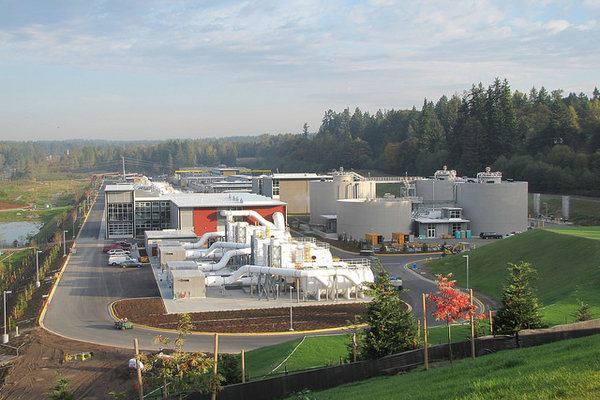PSI’s Andy James is collaborating with scientists at NOAA and Washington State University to understand how wastewater affects juvenile salmon in Puget Sound. The study is led by Jim Meador of NOAA’s Northwest Fisheries Sciences Center and focuses on discharge from three major sewage treatment plants in King County. Wastewater will be analyzed at the University of Washington Tacoma’s Center for Urban Waters for chemical signatures of contaminants such as pharmaceuticals and PCBs.
The study was featured this week in the publication Crosscut. “The scope of chemicals monitored in this study is also noteworthy,” Crosscut reports. “They’ll attempt to identify hundreds of compounds, looking especially for newer chemicals and those that occur in low concentrations.”
To find these compounds, James will use analytical equipment at the Center for Urban Waters that can identify the presence of chemicals in the parts per trillion. James and other scientists say that one of the greatest challenges they face is understanding which of these chemicals make the most impacts on wildlife. Similar studies conducted by NOAA in 2016 found levels of drugs such as prozac and cocaine in salmon. Many chemicals known as “contaminants of emerging concern” pass through humans into wastewater and eventually make it into Puget Sound.
The new study, funded by King County, “aims to go beyond the sensational ‘salmon on cocaine’ headlines to get us closer to understanding what this means for the life cycles of salmon and orcas that eat them,” according to Crosscut. After the wastewater is analyzed, it will be diluted to match potential concentrations that would be found in Puget Sound. Juvenile hatchery salmon will then be exposed to this water in a lab at Washington State University’s Washington Stormwater Center.
Some pharmaceuticals such as those found in birth control pills can affect growth and reproduction in salmon, which could harm salmon populations and may also also decrease critical prey for orcas.
Also of note: PSI’s Director Joel Baker was quoted this week in a story in Geekwire.
 “We now are in a position where you can address some really important questions in Puget Sound,” PSI’s Director Joel Baker told Geekwire. The story focused on the Salish Sea Model, a computer simulation developed by Pacific Northwest National Laboratory that looks at how the ecosystem may change over time. Scientists are using the model to predict a wide variety of conditions within the Salish Sea, from fish movements to the rise of dangerous algal blooms and ocean acidification.
“We now are in a position where you can address some really important questions in Puget Sound,” PSI’s Director Joel Baker told Geekwire. The story focused on the Salish Sea Model, a computer simulation developed by Pacific Northwest National Laboratory that looks at how the ecosystem may change over time. Scientists are using the model to predict a wide variety of conditions within the Salish Sea, from fish movements to the rise of dangerous algal blooms and ocean acidification.
Read the story “From climate mysteries to dead zones, an evolving computer model tackles Puget Sound’s eco-riddles” in Geekwire.
